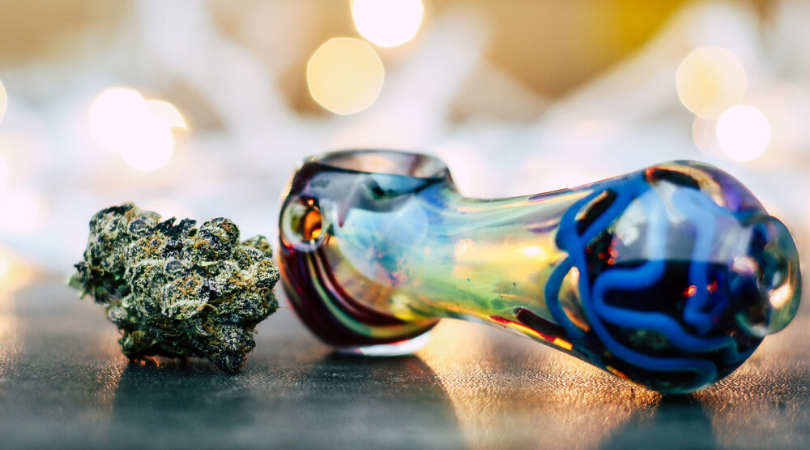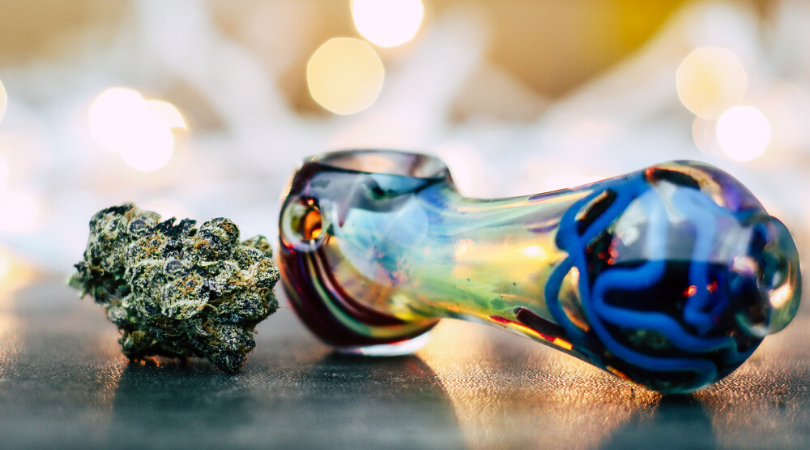
The more often you consume your weed, the more important it becomes to properly maintain your smoking equipment.
Whether you’re using a pipe, bubbler, or a bong, you need to clean them frequently if you don’t want to compromise your next sesh.
The big problem: how to get your glassware clean? How do you keep the resin from accumulating in your piece so it doesn’t smell repelling or release tar compounds such as carbon and carcinogens when you smoke it.
Given this, cleaning your pipes, bubblers, and bongs should be treated just like any chore. Make it a routine and don’t be one of those nasty smokers who toke out of a dirty bong.
In this guide, we’ll show you different types of glassware for smoking cannabis and break down the maintenance and cleaning requirements for pipes, bubblers, and bongs. We’ll also cover the do’s and don’ts of cleaning your stuff, so without further ado, let’s get down to this!
Different Types of Smoking Glassware
Smoking devices have been made out of many different materials, including wood, metal, clay, and even animal horns. However, it was the invention of the glass pipe that revolutionized the world of cannabis paraphernalia.
Now, the glass devices are considered essential tools for any cannabis consumer Meanwhile, just as technology has evolved over several decades, so have the designs and functions of pipes, bubblers, and bongs.
Let’s take a look at different types of glassware.
One-hitters
One-hitters are very small pipes that only allow for smoking a small amount of weed at a time, hence their name. These pipes come in various colors and can be stored and carried in a pocket or in a plastic container known as a “dugout.” One-hitters are the best for discreet sessions.
Chillums
Chillums are slightly larger than a bat and feature a small bowl open on one end of the pipe, where the user can load a small amount of cannabis.
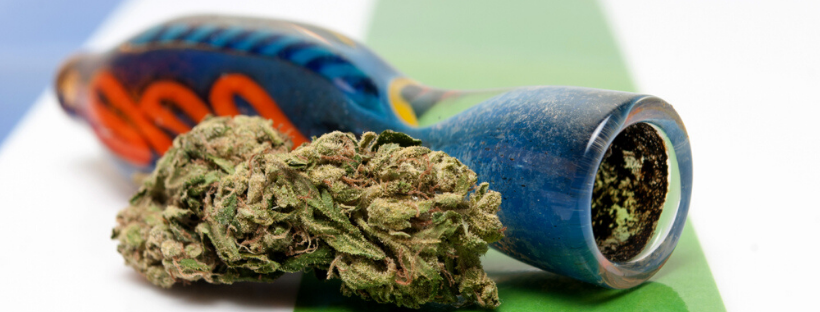
Chillums are extremely easy to use but can’t hold much weed and call for more frequent maintenance than other pipes.
Spoons
Staying true to its name, this type of pipe resembles a spoon with the bowl on the top edge of the piece, rather than the end of the pipe (see above). Spoons are the most common style of a glass pipe. They generally feature a carburetor on the side of the bowl which allows you to draw the air through the pipe’s stem — ensuring smoother hits.
Steamrollers
Steamrollers are named after the way the smoke rolls through the core chamber. Both ends of a steamroller are open with a bowl close to one end. Despite being simple in design, steamrollers have a more difficult learning curve than spoons or chillums
Sherlock Pipes
Also known as the Gandalf Pipe, a sherlock pipe looks like what the legendary detective used to puff his tobacco with. Striking units, these pipes generally feature a foot or a flat bottom to sit on a table or a shelf.
Bubblers
Bubblers are small water pipes, similar to a bong but smaller and simpler in nature. These pipes use water to filter and cool the smoke. They are the best units for those who enjoy puffing on the go but still want to maintain the smoothness of their hits as if they were ripping a bong.
Bongs
The bong is the king of smoking devices, just as the lion is the king of the jungle. A bong can be simple or very elaborate and equipped with multiple chambers and filtration systems that work just like bubblers — but to a much larger extent.
What Are the Pros of Using Glass for Smoking Weed?
Glass is the superior material because it doesn’t alter the flavor or add any impurities to the herb during combustion. As the cannabis community gains more education, the market is becoming more choosy about how marijuana is grown and smoked. Glass offers you just pure cannabis smoke.
Then we have the practical aspect. Glass pipes are ridiculously easy to clean and maintain, so as long as you don’t neglect your piece for a long time, it will serve you for years to come. Glass can be cleaned with some rubbing alcohol within minutes.

Last but not least, obviously, glass pipes offer unmatched durability. A few decades ago, glass pieces for smoking were fragile, but now, most pieces are made with sturdy borosilicate glass that is resistant to damage — of course, not fully resistant, so don’t be shocked if your bong breaks up after you throw it down from the third floor.
What Are the Cons?
While glass is the best material to savor the flavor of your cannabis strain, there are a few disadvantages to this kind of pipes as well.
Despite the aforementioned durability, all glass has minor stress points. As the material is heated and cooled time and again through regular use, these internal spots can fracture — creating cracks that can cause your pipe to shatter.
Plus, pipes made from borosilicate glass are usually priced at the higher end but the aforementioned advantages make it worth the higher price tag.
How Do You Clean Your Pipes, Bubblers, and Bongs?
Cleaning pipes, bubblers, and bongs is simple; all you need to do is keep the maintenance routine consistent to avoid long cleaning sessions and scrubbing the crap out of your piece.
Speaking of which, let’s talk about the basic maintenance principles when it comes to pipes.
Maintenance
In this section, we share a few tips to keep your pipes in tip-top shape between serious cleans.
- Use filtered water in your pipes to prevent mineral buildups.
- Get rid of the water after each session.
- Give your device a thorough clean at least once a week. However, if you’re a heavy smoker, you can clean it daily or every other day to avoid deep cleans.
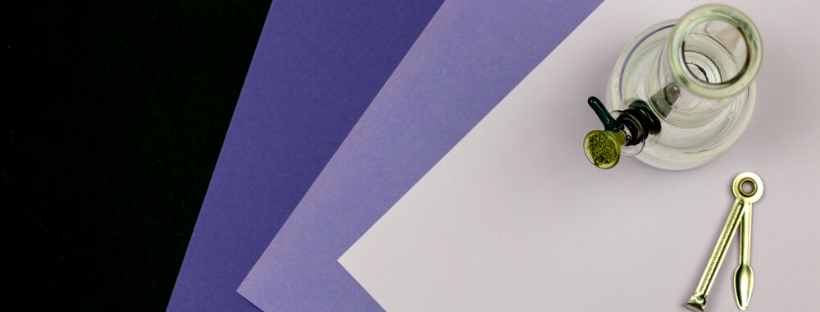
Many people turn to commercial cleaning solutions that contain chemicals to make maintenance easier. The truth is that there isn’t enough research into specific pipe cleaning methods, so at the end of the day, it’s best to use natural resources that will be safe both for your pipe and health.
Let’s elaborate on the two most common cleaning methods.
Boiling Method
As you may guess, the boiling method requires you to soak your pipe in boiling water.
The key to success here is to remember NOT TO drop a cold pipe into the pot. Instead, immerse the piece in a pot of lukewarm water first, and bring the pot to a boil along with the pipe. Once the water is boiling, remove the pot from the heat and leave the pipe in the water for 15-20 minutes to soften the residue. Then you can use a pipe cleaner or some q-tips to get rid of the resin, even from the problematic spots.
Alcohol Method
If you don’t want to go through the whole boiling stuff, you can use the alcohol method as an alternative. Jus put the pipe in a container large enough to enclose it. Add rubbing alcohol with a generous pinch of Epsom salt and let it soak overnight. The alcohol will penetrate the resin, dissolving it and breaking any stuck-on particles away with the salt.
How to Clean a Dry Pipe
With dry pipes, you may want to steer clear of boiling. So instead of making a hot bath for your apparatus, give it a little shaking and a lot of soaking. There are plenty of ways to do it, from different container types to the choice of the dissolving liquid.
You can use a large bowl that is capacious enough to fully submerge the pipe in liquid, a Ziploc bag, or another airtight container.
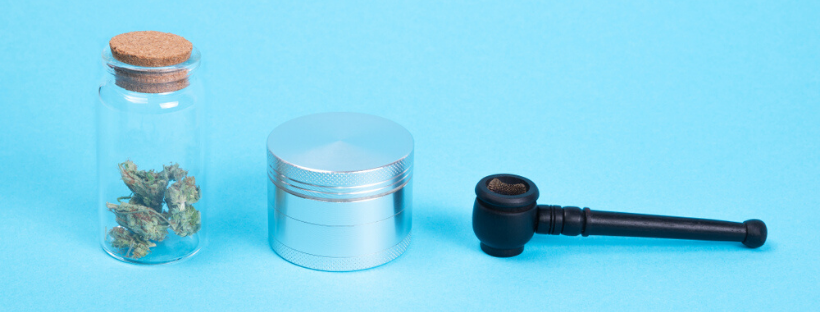
When it comes to the liquid, again, there’s a myriad of options and people get really confused about what to choose. Our go-to liquid is vodka or white vinegar accompanied by the aforementioned Epsom salt. It’s an inexpensive and safe solution for cleaning dry pipes.
Start by filling the bag or container with equal parts of rubbing alcohol and lukewarm water. Then add a generous amount of kosher salt, seal the container, and shake it vigorously. Let it sit for 30-60 minutes, then rinse. If there’s still some residue lingering on the pipe, coax the dirt out with a pipe cleaner.
For people using bowls, that cool agitation effect is virtually unachievable, which means that you’ll need to add ingredients lie baking soda and vinegar — the idea is to create something that’s fizzing. Allow the pipe to soak for up to 15 minutes before giving it a rinse with warm water.
How to Clean Bongs and Bubblers
Cleaning bongs is more or less similar to cleaning pipes, but there are some pesky details around methodology you need to be aware of.
First, you want to detach the bowl and the slide from your bong and clean those pieces separately, much in the same way you’d clean your pipe — place them in a container, add cleaning agents, shake, and rinse.
Now, get rid of the bong water and rinse the chamber with new water by pouring it from the top and dumping from the slide opening to prevent the dirty water from getting into the mouthpiece.
As for the temperature of the water, keep it warm but not hot. It’s good to temper glass pipes with warm water from time to time to make them more resistant to damage and weakening.

It may be difficult to find a container large enough to seal a bong, so you’ll need to do more manual work. Wash your piece in the kitchen sink, using the same cleaning solution as you would with a pipe, rinse, dry, and bring that machine back to its former glory.
The Do’s And Don’ts of Cleaning Your Pipes, Bubblers, And Bongs
Based on our experience, we’d like to share the following do’s and don’ts for cleaning your pipes, bubblers, and bongs. Keep them in mind the next time you see your piece ready for a wash.
Do’s
- DO clean your pipe daily, or at least twice a week. It really makes a difference; you can taste the smoke, not the remnants of your last session.
- DO use safe cleaning solutions. Use only natural ingredients or, at least, cleaners that are safe to eat — they won’t harm you or the environment.
- DO switch water in your bubbler or bong every time you finish smoking.
- DO enjoy clean and smooth hits — this should inspire you for taking care of your pipe’s maintenance.
Don’ts
- DON’T use isopropyl alcohol. Although by far the most commonly used cleaning substances among pipe and bong users, this product is also listed by several government agencies as being toxic.
- DON’T substitute natural cleaners with anything you wouldn’t consume directly. Products such as acetone-based nail polish removers can pose a threat to your health. If you choose to medicate the natural way, why add hazardous chemicals to your cleaning routine?
- DON’T procrastinate your clean. The more resin builds up in your piece, the more time you’ll have to devote to getting rid of it.
- DON’T smoke reclaimed residue. Sure, it can get you high, but it ‘s chock full of carcinogens, not to mention it tastes like… well… let’s keep the language clean, at least.
Conclusion
Glass pipes, bubblers, and bongs are an economical and environmentally safe way to consume cannabis. They’re also super easy to clean — so long as you’re not sitting there watching the resin build-up.
If you want to keep your glass piece in good shape, clean it regularly and keep our do’s and don’ts in mind to get through the cleaning process with a smile on your face, not cursing on yourself for being lazy.
How often do you clean your pipes, bubblers, and bongs? What cleaners do you use for the job? We can’t wait to read your stories!

